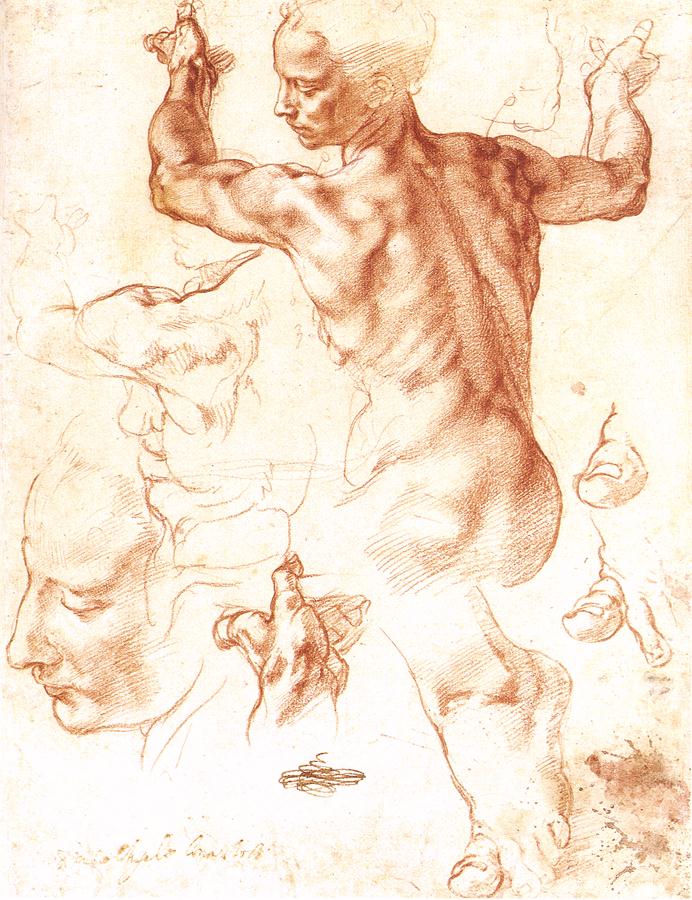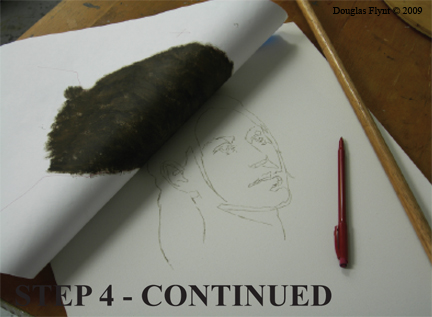(Update 1/18/12) For a French translation of this post please click here for a downloadable PDF file:
The Anatomy of Light on Form: Part II
by Douglas Flynt ©2010
In the previous article we stayed much to the physics of what is occurring as light illuminates a form or object, particularly as it concerns our visual perception. In this second part we will look at how this information can be applied through assessment and application. Similar to the great diversity in procedure employed by anatomically informed artists when drawing the figure the information can be applied in a wide variety of ways. For this reason I have decided to offer it based upon some of my own working thoughts and practices. The reader can then adopt, adapt, or reject these thoughts and practices as they see fit.
Color Terminology
As we continue it is necessary to speak in terms of color since the visual artist cannot express light and how it reveals forms without it. I have approached this with an awareness that color terminology varies greatly among artists, especially in the realm of color models and color space, or the arrangement of colors in three dimensions owing to their attributes. The attributes of color that I generally think in terms of are: "hue," a color's quality of being reddish, orangish, yellowish...etc, "value" its lightness or darkness, and chroma, its degree of departure from a particular hue toward a perfectly neutral grey without shifting in value.
Questions and Assessment
When painting, although I have to ask myself about the colors I am seeing and their relationships as a starting point, I feel I can't leave this as my final assessment in determining the correctness of what I have created. I also need to include questions such as: What is happening? What does each mark or stroke of color I put down imply in terms of form and light? And ultimately, does what I have created make sense in terms of how light illuminates form? A similar comparison can be made to an artist drawing the contour of a figure. When doing so they may ask themselves about the tilts and points that compose the contour but ultimately they need to determine if the contour in their drawing correctly reflects the anatomical structure of the figure.
Visualizing the Light Trajectory
I often visualize the spatial relationship between the object and the light. I evaluate the trajectory that the light will travel—imagining lines emitting from the light source touching the object upon various planes. The angle of tangency with which these lines intersect the planes gives me insight into the amount of light they are receiving. (Figure 1)
Even if I can't see the light source, one way I can still assess its trajectory is to look at an object's cast shadow and mentally align a point along its edge with the corresponding, causative, point along the object's terminator (form-shadow line). An example of this in locating the angle of a light source might be to follow an imaginary line from the outer edge of a sundial's shadow up to the top of its needle. A straight line between these two points gives the light's trajectory. For instance, on a portrait the nose and its cast shadow might be utilized to apply this. (Figure 2)
Although a bit too intrusive for portraits another method I've used to check trajectory is to drive a nail into the flat side of a piece of wood like a ruler so that it is perpendicular to its surface. By placing this ruler close to the object I am working from and then tilting the ruler until the cast shadow from the head of the nail perfectly aligns with the nail's base, the tilt of the nail's shaft is now aligned to give the trajectory of the light. (Figure 3)
Surface Planes in Relation to Light Trajectory
With the light's trajectory established I can examine an object's surface planes in relation to the trajectory. From Part I of the article we know on a surface composed of primarily diffuse reflection, unless obscured by specular reflections or altered by other variables such as local color changes, the more these surface planes face away from the light the more they should tend to appear darker in value and weaker in chroma. This progression begins very slowly out in the lights and then speeds up as we move into the half-tones and finally into the shadows. By considering this for each individual plane, the very subtle value and chroma shifts which are nearly indistinguishable by eye often become much more apparent. This assessment of surface planes and the light trajectory for each of them allows me to express very subtle modulations of value and chroma along with their directional gradations.
Using a Sphere to Visualize Surface Planes in Relation to Light Trajectory
Very often when assessing tilts many artist's compare them to a horizontal and vertical plum line, either real or imagined. This context tends to make their assessments more accurate. In a very similar way the surface planes of an object can be compared to a sphere (often thought of with some degree of faceting) under the same lighting conditions. By assessing a surface plane on the object and comparing it with a surface plane on the sphere that has the same spatial orientation, the sphere gives context to the plane and clearly allows a judgment to be made whether or not it is receiving a lot of light or very little light. This then translates to a clearer sense of what its value and chroma should be relative to other planes. In this way surface planes can also be easily assessed as belonging to a region of light, halftone or shadow. (Figure 4)
The use of a sphere also allows for the comparison of multiple surface planes on an object to see relative color relationships. For example two surface planes on an object may appear visually quite similar in value but once both have been assessed as planes on a sphere it often becomes quite obvious which is lighter and which is darker according to how much light they receive.
Painting Dark to Light or Light to Dark Examining Diffuse Reflection
Whether painting broadly or tightly, the examination of diffuse reflection from either dark to light or light to dark is often a helpful sequence for me. This consideration allows me to anticipate what is likely to happen as I move across the object either away from the light or toward the direction of light. Assuming that I am working in an area of a single local-color, as I progress across the surface from one plane to the next, based upon the light on the form I can anticipate whether it should be lighter or darker in value and stronger or weaker in chroma than the previous plane and skew the mixture(s) on my palette in that direction.
Small pools of paint can be created on the palette one next to the other, each color representing the amount of light a particular plane is reflecting. By placing these pools next to each other on the palette even very delicate modulations of color can be detected and any radical break in the trajectory of the sequence of hue, value or chroma stand out. (Figure 5)
In addition, painting this way allows for the construction of one section of form at a time. In doing this, each section can be evaluated to see if it correctly conveys the form of the object and makes sense in terms of how light illuminates it.
Conclusion
Although this article is limited, both parts focus upon the anatomy of light on form. The expression of this, consciously or unconsciously, is part of every representational artist's consideration. Part I offers a scientific base to be built upon through knowledge and experience. Part II offers ideas for the unitization and conveyance of that science which can be made to serve artistic creativity depending upon individual artistic genius and need. Together they offer points for consideration so that ultimately our thoughts and execution are clearer as we not only see but also understand the why of the representational creative process.













